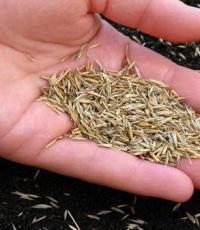Guidelines for determining Panfilov's fuel consumption. On approval and implementation of "guidelines for determining the costs of fuel, electricity and water for heat generation by heating boiler houses of communal heat and power plants
STATE COMMITTEE OF THE RUSSIAN FEDERATION FOR CONSTRUCTION AND
HOUSING AND UTILITY COMPLEX
SUE ACADEMY OF PUBLIC SERVICES them. K.D. PAMFILOVA
METHODOLOGICAL INSTRUCTIONS FOR DETERMINING THE EXPENSES OF FUEL, ELECTRICITY AND WATER
FOR THE GENERATION OF HEAT BY HEATING BOILERS
PUBLIC HEAT POWER ENTERPRISES
(Edition 4th)
Moscow 2002
Methodical instructions contain methods for calculating heat consumption by consumers for heating, for heating water for hot water supply, ventilation; heat consumption for own needs of the boiler house; consumption of fuel, electricity and water for heat generation by sources.
The guidelines are intended for use by engineering and technical workers of communal heat and power enterprises when carrying out calculations to determine the planned consumption of fuel, electricity and water in the production of heat and housing and communal services when determining the planned heat consumption by the housing and communal sector.
This edition of the Guidelines is issued to replace the Guidelines for Determining the Costs of Fuel, Electricity and Water for Heat Generation by Heating Boilers of Municipal Heat and Power Enterprises (M., ONTI AKH, 1994).
The guidelines were developed by the Energy Efficiency Department of the Housing and Communal Services of the ACS named after. K.D. Pamfilova.
Comments and suggestions on these Guidelines, please send to the address: 123371, Moscow, Volokolamskoe shosse, 116, AKH im. K.D. Pamfilova, department of energy efficiency of housing and communal services.
|
1. General provisions. 2 2. Determining the amount of heat consumed.. 2 2.1. Determining the amount of heat for heating. 3 2.2. Determining the amount of heat for ventilation.. 13 2.3. Determination of the amount of heat for heating water for hot water supply. 17 2.4. Determination of coolant flow rates. 22 3. Determining the amount of generated heat.. 24 3.1. Determination of the amount of heat for the own needs of boiler houses. 25 3.2. Determination of the amount of heat lost in heat networks. 29 3.3. Examples of calculations. 34 4. Determination of the required amount of fuel for heat generation.. 36 5. Determining the amount of electricity required to generate heat .. 41 6. Determining the amount of water for heat generation.. 47 Applications. 52 Appendix 1. Tables for determining the amount of heat consumed.. 52 Appendix 2. Tables for determining the amount of generated heat.. 72 Appendix 3. tables for determining the required amount of fuel for heat generation.. 78 Appendix 4. Tables for determining the amount of electricity required to generate heat.. 82 Appendix 5. Tables for determining the amount of water for heat generation.. 86 Appendix 6. Relationship between calorie-based heat units, µgcc units, and SI units.. 88 List of used literature.. 89 |
1. GENERAL PROVISIONS
1.1. These guidelines are intended for use by employees of communal heat and power enterprises in the current planning of the need for fuel, electricity and water for heat generation.
1.2. The guidelines can be used by housing enterprises and municipal organizations to determine the need for heat for the needs of heating, hot water supply and ventilation for residential and public buildings and to develop energy saving measures.
1.3. Regulatory flow rates of water and heat should be considered as the maximum allowable under normal operating conditions of heating and hot water supply systems. When water and heat consumption is exceeded, it is necessary to determine the reasons for the overrun and provide measures to eliminate it by increasing the level of operation. Measures that lead to a decrease in water and heat consumption below the norm while ensuring comfortable living conditions for residents are classified as energy saving.
1.4. Accounting for the amount of heat sold should be carried out by devices at the metering point at the interface of heat networks. Heat losses by heating networks are borne by the party on whose balance sheet the heating networks are located. Heat losses by heat pipelines laid in the basement of buildings should be charged to consumers in proportion to the loads of buildings connected to heat pipelines.
1.5. Before calculating the heat demand, an assessment should be made of the reliability of the initial information: design heat loads for district heating, volumes of buildings, the number of residents provided with centralized hot water supply, diameters and lengths of pipelines of heating networks that are on the balance of the consumer, etc.
1.6. These Guidelines are issued instead of the Guidelines for determining the costs of fuel, electricity and water for heat generation by heating boiler houses of municipal heat and power enterprises, developed and published by GUP AKH named after. K.D. Pamfilova in 1994
Calculation of consumption through a heat meter
Calculation of the coolant flow rate is carried out according to the following formula:
G = (3.6 Q)/(4.19 (t1 - t2)), kg/h
- Q is the thermal power of the system, W
- t1 is the temperature of the heat carrier at the inlet to the system, °C
- t2 is the temperature of the coolant at the outlet of the system, °C
- 3.6 - conversion factor from W to J
- 4.19 - specific heat capacity of water kJ/(kg K)
Calculation of the heat meter for the heating system
The calculation of the coolant flow for the heating system is carried out according to the above formula, while the calculated heat load of the heating system and the calculated temperature graph are substituted into it.
The calculated heat load of the heating system, as a rule, is indicated in the contract (Gcal / h) with the heat supply organization and corresponds to the heat output of the heating system at the estimated outdoor temperature (for Kyiv -22 ° C).
The calculated temperature schedule is indicated in the same contract with the heat supply organization and corresponds to the temperatures of the coolant in the supply and return pipelines at the same design outdoor temperature. The most commonly used temperature charts are 150-70, 130-70, 110-70, 95-70 and 90-70, although other settings are possible.
Calculation of a heat meter for a hot water supply system
Closed water heating circuit (through a heat exchanger) heat meter installed in the heating water circuit
t1 - It is taken equal to the minimum temperature of the coolant in the supply pipeline and is also indicated in the heat supply contract. As a rule, it is 70 or 65°C.
t2 - The temperature of the heat carrier in the return pipeline is assumed to be 30°C.
Closed water heating circuit (through a heat exchanger) heat meter installed in the heated water circuit
Q - The heat load on the hot water supply system is taken from the heat supply contract.
t1 - It is taken equal to the temperature of the heated water at the outlet of the heat exchanger, as a rule it is 55°C.
t2 is assumed to be equal to the water temperature at the inlet to the heat exchanger in winter period, usually take 5°C.
Heat meter calculation for several systems
When installing one heat meter for several systems, the flow through it is calculated for each system separately, and then summarized.
The flow meter is selected in such a way that it can take into account both the total flow rate for the simultaneous operation of all systems, and the minimum flow rate for the operation of one of the systems.
Heat meters
- The temperature of the liquid at the inlet and outlet of a certain section of the pipeline.
- The flow rate of fluid that moves through heating devices.
Consumption can be determined using heat meters. Heat meters can be of two types:
- Wing counters. Such devices are used to account for thermal energy, as well as consumption hot water. The difference between such meters and cold water metering devices is the material from which the impeller is made. In such devices, it is most resistant to high temperatures. The principle of operation is similar for two devices:
- The rotation of the impeller is transmitted to the accounting device;
- The impeller begins to rotate due to the movement of the working fluid;
- The transfer is made without direct interaction, but with the help of a permanent magnet.
Such devices have simple design, but their threshold is low. And also they have reliable protection against distortion of indications. With the help of an anti-magnetic screen, the impeller is prevented from braking by an external magnetic field.
- Devices with a recorder of differences. Such meters operate according to Bernoulli's law, which states that the speed of a liquid or gas flow is inversely proportional to its static movement. If the pressure is recorded by two sensors, it is easy to determine the flow in real time. The counter implies electronics in the design device. Almost all models provide information on the flow and temperature of the working fluid, as well as determine the consumption of thermal energy. You can set the operation manually using a PC. You can connect the device to a PC through the port.
Many residents are wondering how to calculate the amount of Gcal for heating in open system heating, in which selection for hot water is possible. Pressure sensors are installed on the return pipe and the supply pipe at the same time. The difference that will be in the flow rate of the working fluid will show the amount warm water, which was spent for household needs.
Heat load schedule
To establish an economical
mode of operation of the heating
equipment, selection of the most optimal
coolant parameters it is necessary
know the duration of the system
heat supply under various modes
during a year. For this purpose, they build
heat duration charts
loads (Rossander plots).
Plot method
duration of seasonal heat
load is shown in fig. 4. Construction
conducted in four quadrants. In the left
upper quadrant graphs are plotted
outside temperature
t H ,
heat load
heating Q,
ventilation Q B and total seasonal
loads (Q
+
p c
during the heating season outdoor
temperatures t n,
equal to or below this temperature.
In the lower right quadrant
a straight line is drawn at an angle of 45° to
vertical and horizontal axes,
used to transfer values
scales P from
lower left quadrant to upper
right quadrant. Duration Graph
thermal load 5 is built for
different outside temperatures t n by intersection points
dashed lines defining thermal
load and standing time
loads equal to or greater than this.
Area under the curve 5
duration
heat load is equal to heat consumption
for heating and ventilation for heating
season Q with year.

Rice. 4. Plotting
duration of seasonal heat
loads
In the event that the heating
or ventilation load changes
by hours of the day or days of the week,
e.g. when during non-working hours
industrial enterprises are transferred
for standby heating or ventilation
industrial enterprises works
non-round the clock, three
heat flow curves: one (usually
solid line) based on average
at a given outside flow temperature
heat per week for heating and
ventilation; two (usually dashed)
based on the maximum and minimum
heating and ventilation loads
the same outdoor temperature t H .
Such a construction
shown in fig. 5.

Rice. 5. Integral graph
the total load of the area
a- Q= f(t n);
b-
heat duration chart
loads; 1 - average hourly per week - maximum hourly
total load; 3
- minimum hourly
Annual heat consumption per
heating can be calculated from a small
error without accurate accounting
outdoor temperature repeatability
air for the heating season, taking
average heat consumption for heating
season equal to 50% of heat consumption for
heating at the calculated outdoor
temperature t but .
If the annual
heat consumption for heating, then, knowing
duration heating season,
it is easy to determine the average heat consumption.
Maximum heat consumption for heating
possible for approximate calculations
take equal to twice the average
consumption.
Option 3
We are left with the last option, during which we will consider the situation when there is no heat meter on the house. The calculation, as in previous cases, will be carried out in two categories (thermal energy consumption for an apartment and ONE).
We will deduce the amount for heating using formulas No. 1 and No. 2 (rules on the procedure for calculating thermal energy, taking into account the readings of individual metering devices or in accordance with the established standards for residential premises in gcal).
Calculation 1
- 1.3 gcal - readings of an individual meter;
- 1 400 rubles - approved rate.

As in the second option, the payment will depend on whether your housing is equipped with an individual heat meter. Now it is necessary to find out the amount of heat energy that was spent on general house needs, and this must be done according to formula No. 15 (volume of service for one unit) and No. 10 (amount for heating).
Calculation 2
Formula No. 15: 0.025 x 150 x 70 / 7000 \u003d 0.0375 gcal, where:
- 0.025 gcal - standard indicator of heat consumption per 1 m? living area;
- 100 m? - the amount of the area of \u200b\u200bpremises intended for general house needs;
- 70 m? - the total area of the apartment;
- 7,000 m? - total area (all residential and non-residential premises).
- 0.0375 - volume of heat (ONE);
- 1400 r. - approved rate.

As a result of the calculations, we found out that the full payment for heating will be:
- 1820 + 52.5 \u003d 1872.5 rubles. - with individual counter.
- 2450 + 52.5 \u003d 2,502.5 rubles. – without individual counter.
In the above calculations of payments for heating, data on the footage of the apartment, house, as well as on the meter indicators, which may differ significantly from those that you have, were used. All you need to do is plug your values into the formula and make the final calculation.
How to calculate the consumed thermal energy
If there is no heat meter for one reason or another, then the following formula must be used to calculate the heat energy:
Let's take a look at what these conventions mean.
1. V denotes the amount of hot water consumed, which can be calculated either in cubic meters or in tons.
2. T1 is the temperature indicator of the hottest water (traditionally measured in the usual degrees Celsius). In this case, it is preferable to use exactly the temperature that is observed at a certain operating pressure. By the way, the indicator even has a special name - this is enthalpy. But if the desired sensor is not available, then as a basis, you can take that temperature regime, which is extremely close to this enthalpy. In most cases, the average is approximately 60-65 degrees.
3. T2 in the above formula also indicates the temperature, but already cold water. Due to the fact that to penetrate the highway with cold water- the matter is rather difficult, as this value constant values \u200b\u200bare used that can change depending on the climatic conditions on the street. So, in winter, when the heating season is in full swing, this figure is 5 degrees, and in summer time, with the heating turned off, 15 degrees.
4. As for 1000, this is the standard coefficient used in the formula in order to get the result already in gigacalories. It will be more accurate than if calories were used.
5. Finally, Q is the total amount of thermal energy.
As you can see, there is nothing complicated here, so we move on. If the heating circuit closed type(and this is more convenient from an operational point of view), then the calculations must be done in a slightly different way. The formula to use for a closed building heating system, should look like this:
Now, respectively, to decryption.
1. V1 denotes the flow rate of the working fluid in the supply pipeline (not only water, but also steam can act as a source of thermal energy, which is typical).
2. V2 is the flow rate of the working fluid in the "return" pipeline.
3. T is an indicator of the temperature of the cold liquid.
4. T1 - water temperature in the supply pipeline.
5. T2 - temperature indicator, which is observed at the outlet.
6. And, finally, Q is all the same amount of thermal energy.
It is also worth noting that the calculation of Gcal for heating in this case is based on several designations:
- thermal energy that entered the system (measured in calories);
- temperature indicator during the removal of the working fluid through the "return" pipeline.
—
CAUTION 1
ÐеÑодика Ñеплового ÑаÑÑеÑа ÑÑого аппаÑаÑа ÑазÑабоÑана в пÑедположении, ÑÑо аппаÑÐ°Ñ ÑабоÑÐ°ÐµÑ Ð² ÑÑаÑионаÑном Ñежиме. ÐÑо пÑедположение ÑкÑпеÑименÑалÑно подÑвеÑждено. Ðоказано, ÑÑо изменение напÑÐ°Ð²Ð»ÐµÐ½Ð¸Ñ Ð¿Ð¾Ñоков в ÑевеÑÑивнÑÑ ÐºÐ°Ð½Ð°Ð»Ð°Ñ Ð¸ пÑоÑеÑÑÑ ÐºÐ¾Ð½Ð´ÐµÐ½ÑаÑии и иÑпаÑÐµÐ½Ð¸Ñ Ð²Ð¾Ð´Ñ Ð¾ÐºÐ°Ð·ÑваÑÑ Ð½ÐµÐ·Ð½Ð°ÑиÑелÑное влиÑние на ÑемпеÑаÑÑÑнÑй Ñежим.
â
ÐеÑодика Ñеплового ÑаÑÑеÑа паÑовÑÑ Ð¸ водогÑейнÑÑ ÐºÐ¾Ñлов ÑазбиÑа на оÑделÑнÑе ÑаÑÑи, помеÑеннÑе в ÑооÑвеÑÑÑвÑÑÑие главÑ.
â
ÐеÑодики ÑепловÑÑ ÑаÑÑеÑов , ÑазÑабоÑаннÑе Ð. Ð. Ðлин-ковÑм, Ð. Ð. ТайÑем и дÑÑгими, вÑледÑÑвие Ð¸Ñ Ð¿ÑоÑÑоÑÑ Ð¿Ð¾Ð»ÑÑили болÑÑое ÑаÑпÑоÑÑÑанение.
â
ÐеÑодика Ñеплового ÑаÑÑеÑа ÑводиÑÑÑ Ðº ÑледÑÑÑемÑ.
â
ÐеÑодика ÑепловÑÑ ÑаÑÑеÑов пÑиведена в Ñазд.
â
ÐеÑодика Ñеплового ÑаÑÑеÑа инжекÑоÑа оÑвеÑена в лиÑеÑаÑÑÑе, а поÑÐ¾Ð¼Ñ Ð¾Ð³ÑаниÑимÑÑ Ð¿Ñиведением оконÑаÑелÑнÑÑ ÑаÑÑеÑнÑÑ ÑоÑмÑл (бÑквеннÑе обознаÑÐµÐ½Ð¸Ñ Ñм. на Ñиг.
â
ÐеÑодика Ñеплового ÑаÑÑеÑа мÑÑелÑнÑÑ Ð¿ÐµÑей аналогиÑна пÑиведенной в § 11.1, но пÑи неÑкол Ñðºð: ·¸ · ðices ððµð½ð½ñ½ ± ð ñññññ ð²ð½ porn ñµµ¿¿ ¿¿¿ðoll ¿>ð², ñ ° ° ð ° ñ ñµ °µ °ñð ° ° ° ° ° 19 о ÑолÑко ÑеÑез ÑÑенки мÑÑеоÑ.
â
ÐеÑодика Ñеплового ÑаÑÑеÑа ÑеплообменнÑÑ Ð°Ð¿Ð¿Ð°ÑаÑов ÑÑваиваеÑÑÑ Ð»ÑÑÑе вÑего пÑи ÑаÑÑмоÑÑении ÑаÑÑнÑÑ ÑиÑловÑÑ Ð¿ÑимеÑов.
â
ÐеÑодика Ñеплового ÑаÑÑеÑа вÑаÑаÑÑегоÑÑ Ð°Ð´ÑоÑбеÑа в ÑÑом ÑлÑÑае ÑводиÑÑÑ Ðº ÑледÑÑÑим опеÑаÑиÑм.
â
ÐеÑодика Ñеплового ÑаÑÑеÑа многоÑÑÑбнÑÑ Ð¿Ð¾Ð´Ð·ÐµÐ¼Ð½ÑÑ Ð¿Ñокладок , как каналÑнÑÑ, Ñак и беÑканалÑнÑÑ Ð·Ð½Ð°ÑиÑелÑно Ñложнее, Ñак как ÑепловÑе поÑеÑи вÑÐµÑ ÑÑдом ÑложеннÑÑ ÑÑÑб взаимно ÑвÑÐ·Ð°Ð½Ñ Ð¼ÐµÐ¶Ð´Ñ Ñобой.
â
ÐеÑодика Ñеплового ÑаÑÑеÑа иÑпаÑиÑелей ÑазлиÑнÑÑ ÐºÐ¾Ð½ÑÑÑÑкÑий оÑвеÑен а во вÑоÑом Ñазделе гл.
â
ÐеÑодика Ñеплового ÑаÑÑеÑа ÑекÑионнÑÑ Ð¿Ð¾Ð´Ð¾Ð³ÑеваÑелей мазÑÑа в Ñелом ÑÐ¾Ð²Ð¿Ð°Ð´Ð°ÐµÑ Ñ Ð¼ÐµÑодикой ÑаÑÑеÑа гладкоÑÑÑбнÑÑ Ð°Ð¿Ð¿Ð°ÑаÑов Ñипа ÐÐ, но еÑÑÑ ÑÑд оÑлиÑий.
â
Other ways to calculate the amount of heat
The calculation formula for heating in this case may differ slightly from the above and have two options:
- Q = ((V1 * (T1 - T2)) + (V1 - V2) * (T2 - T)) / 1000.
- Q = ((V2 * (T1 - T2)) + (V1 - V2) * (T1 - T)) / 1000.
All values of the variables in these formulas are the same as before.
Based on this, it is safe to say that the calculation of kilowatts of heating can be done with your own on your own. However, do not forget about consulting with special organizations responsible for supplying heat to dwellings, since their principles and calculation system can be completely different and consist of a completely different set of measures.

Having decided to design a so-called “warm floor” system in a private house, you need to be prepared for the fact that the procedure for calculating the volume of heat will be much more difficult, since in this case it is necessary to take into account not only the features of the heating circuit, but also provide for the parameters of the electrical network, from which and the floor will be heated. At the same time, the organizations responsible for monitoring such installation work will be completely different.
Many owners often face the problem of converting the required amount of kilocalories into kilowatts, which is due to the use of many auxiliary aids of measuring units in the international system called "Ci". Here you need to remember that the coefficient that converts kilocalories to kilowatts will be 850, that is, speaking more plain language, 1 kW is 850 kcal. This calculation procedure is much simpler, since it will not be difficult to calculate the required amount of gigacalories - the prefix "giga" means "million", therefore, 1 gigacalorie - 1 million calories.
In order to avoid errors in calculations, it is important to remember that absolutely all modern heat meters have some error, and often within acceptable limits. The calculation of such an error can also be done independently using the following formula: R = (V1 - V2) / (V1 + V2) * 100, where R is the error of the common house heating meter
V1 and V2 are the parameters of the water flow in the system already mentioned above, and 100 is the coefficient responsible for converting the obtained value into a percentage. In accordance with operating standards, the maximum allowable error can be 2%, but usually this figure in modern devices does not exceed 1%.
Heat meter calculation
Calculation of the heat meter consists in choosing the size of the flow meter. Many mistakenly believe that the diameter of the flowmeter must match the diameter of the pipe on which it is installed.
The diameter of the heat meter flow meter should be selected based on its flow characteristics.
- Qmin — minimum flow, m³/h
- Qt - transition flow, m³/h
- Qn - nominal flow, m³/h
- Qmax — maximum allowable flow, m³/h
0 - Qmin - the error is not standardized - long-term operation is allowed.
Qmin - Qt - error not more than 5% - long-term operation is allowed.
Qt – Qn (Qmin – Qn for flowmeters of the second class for which the Qt value is not specified) – error not more than 3% – continuous operation is allowed.
Qn - Qmax - error no more than 3% - work is allowed no more than 1 hour per day.

It is recommended to select flowmeters of heat meters in such a way that the calculated flow rate falls in the range from Qt to Qn, and for flowmeters of the second class for which Qt is not specified, in the range of flow rates from Qmin to Qn.
In this case, one should take into account the possibility of reducing the flow of the heat carrier through the heat meter, associated with the operation of control valves and the possibility of increasing the flow through the heat meter, associated with the instability of the temperature and hydraulic conditions of the heating network. It is recommended by regulatory documents to select a heat meter with the closest value of the nominal flow rate Qn to the calculated flow rate of the coolant. Such an approach to choosing a heat meter practically excludes the possibility of increasing the coolant flow rate above the calculated value, which quite often has to be done in real heat supply conditions.
Agreed
Federal Energy
commission Russian Federation
Department of State
energy supervision,
licensing
and energy efficiency
Ministry of Energy of Russia
METHODOLOGY
DETERMINATION OF THE NEED FOR FUEL, ELECTRIC ENERGY
AND WATER IN THE PRODUCTION AND TRANSMISSION OF THERMAL ENERGY
AND HEAT CARRIERS IN PUBLIC HEAT SUPPLY SYSTEMS
Developed by closed joint stock company"Roskommunenergo" (Khizh E.B., Skolnik G.M., Bytensky O.M., Tolmasov A.S.) with the participation of the Russian Association "Communal Energy" and the Academy public utilities them. K.D. Pamfilova.
Approved by the Federal Energy Commission of the Russian Federation (22.04.03, N ЕЯ-1357/2), the Department of State Energy Supervision, Licensing and Energy Efficiency of the Ministry of Energy of Russia (10.04.03, N 32-10-11/540).
Approved by the Section "Communal Energy" of the Scientific and Technical Council of the Gosstroy of Russia (minutes N 01-ns-14/1 dated 29.05.03).
Approved by the Deputy Chairman of the Gosstroy of Russia on 12.08.03.
"determining the need for fuel, electric energy and water in the production and transmission of thermal energy and heat carriers in public heat supply systems" was developed for use in forecasting and planning the need for fuel, electric energy and water by heat supply organizations of the housing and communal complex, management bodies of the housing and communal economy.
The methodology is also used to justify the need of heat supply organizations for financial resources when considering tariffs (prices) for thermal energy, its transmission and distribution.
The use of the Methodology makes it possible to evaluate the technical and economic efficiency when planning energy-saving measures, introducing energy-efficient technological processes and equipment.
This Method is used instead of:
Guidelines for determining the consumption of fuel, electricity and water for heat generation by heating boiler houses of communal heat and power enterprises, approved by the Deputy Chairman of the Committee of the Russian Federation on Municipal Economy on February 22, 1994;
Instructions for rationing the consumption of boiler and furnace fuel for the supply of thermal energy by boiler systems of the Ministry of Housing and Communal Services of the RSFSR, approved by the Ministry of Housing and Communal Services of the RSFSR on 06/27/84.
When preparing the Methodology, the proposals of the Institute of Economics of Housing and Communal Services, the State Unitary Enterprise SantekhNIIproekt, the Association Mosoblteploenergo, the research and development company Intekhenergo M of the Moscow Power Engineering Institute, the production and technical enterprise Orgkommunenergo-M, a number of municipal heat and power enterprises (Vologda, Stavropol, Taganrog, Rostov region, etc.).
MINISTRY OF HOUSING AND UTILITIES OF THE RSFSR
On approval and implementation of the "Methodological guidelines for determining the costs of fuel, electricity and water for heat generation by heating boiler houses of communal heat and power enterprises"
I order:
1. Approve and put into effect from October 1, 1987 "Guidelines for determining the costs of fuel, electricity and water for heat generation by heating boiler houses of communal heat and power enterprises" * developed by the Academy of Public Utilities named after K.D. Pamfilov and Orgkommunenergo.
________________
2. The Academy of Public Utilities named after KD Pamfilov (comrade Shkiryatov) in the III quarter of 1987 to publish "Guidelines ..." in a circulation of 1000 copies and distribute according to the order of Roskommunenergo.
3. The ministries of housing and communal services of the ASSR, the departments of housing and communal services of the krai (regional) executive committees, the sectoral departments of the energy sector of the Councils of Ministers of the ASSR, the krai (regional) executive committees to ensure the introduction of "Methodological instructions ...".
4. Academy of Public Utilities named after K.D. Pamfilov (comrade Shkiryatov) and Orgkommunenergo (comrade Kharin) to summarize the experience of using the "Guidelines ..." for 1987-1988 and report the results to Roskommunenergo and the Technical Department in the IV quarter 1988.
5. Consider as invalid from October 1, 1987 "Guidelines for determining the costs of fuel, electricity and water for heat generation by heating boiler houses of communal heat and power enterprises", approved by Order of the Ministry of September 4, 1978 N 417.
6. To impose control over the execution of this Order on Roskommunenergo (comrade Ivanov).
Deputy Minister
A.P. Ivanov
Electronic text of the document
prepared by Kodeks JSC and verified against:
mailing list





